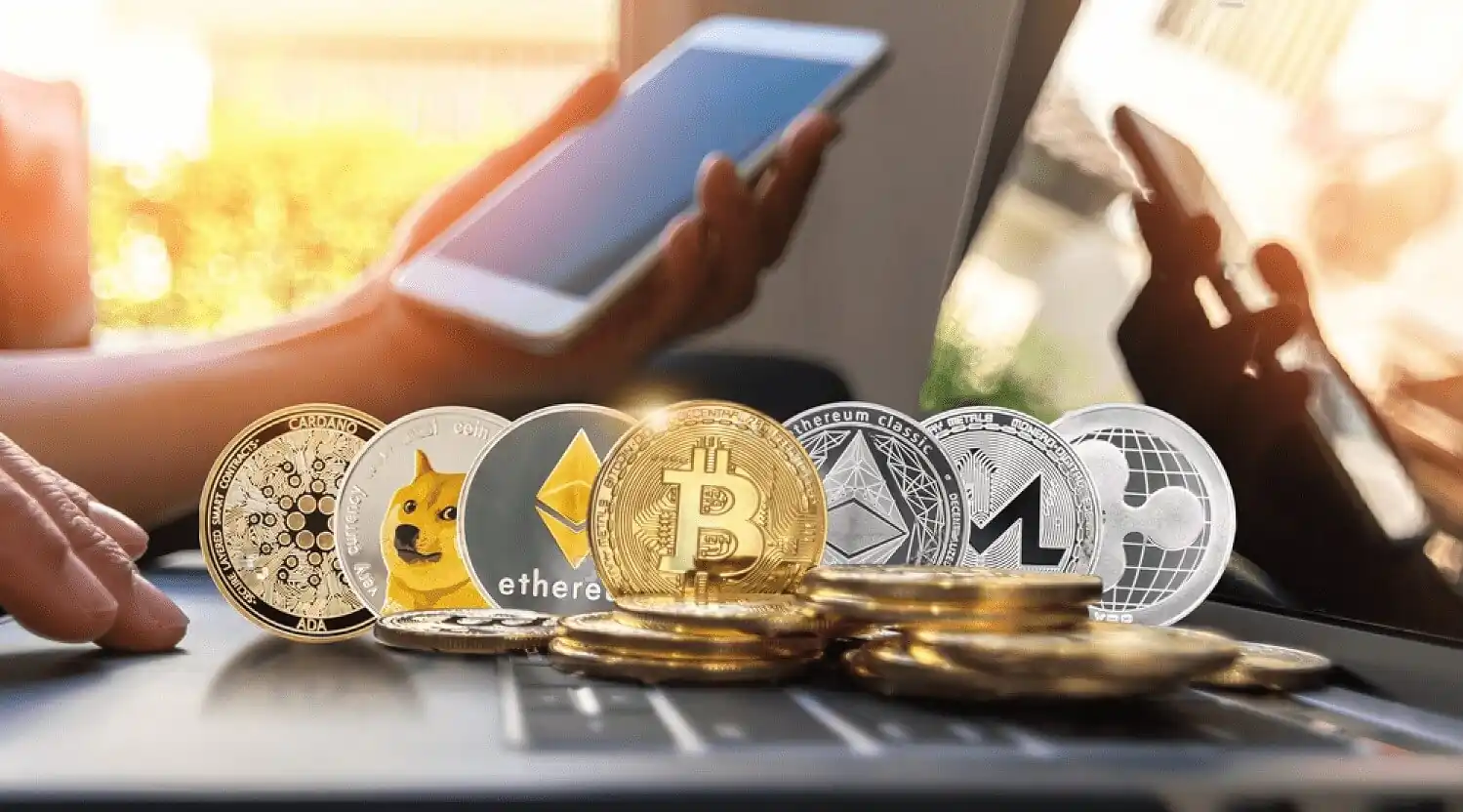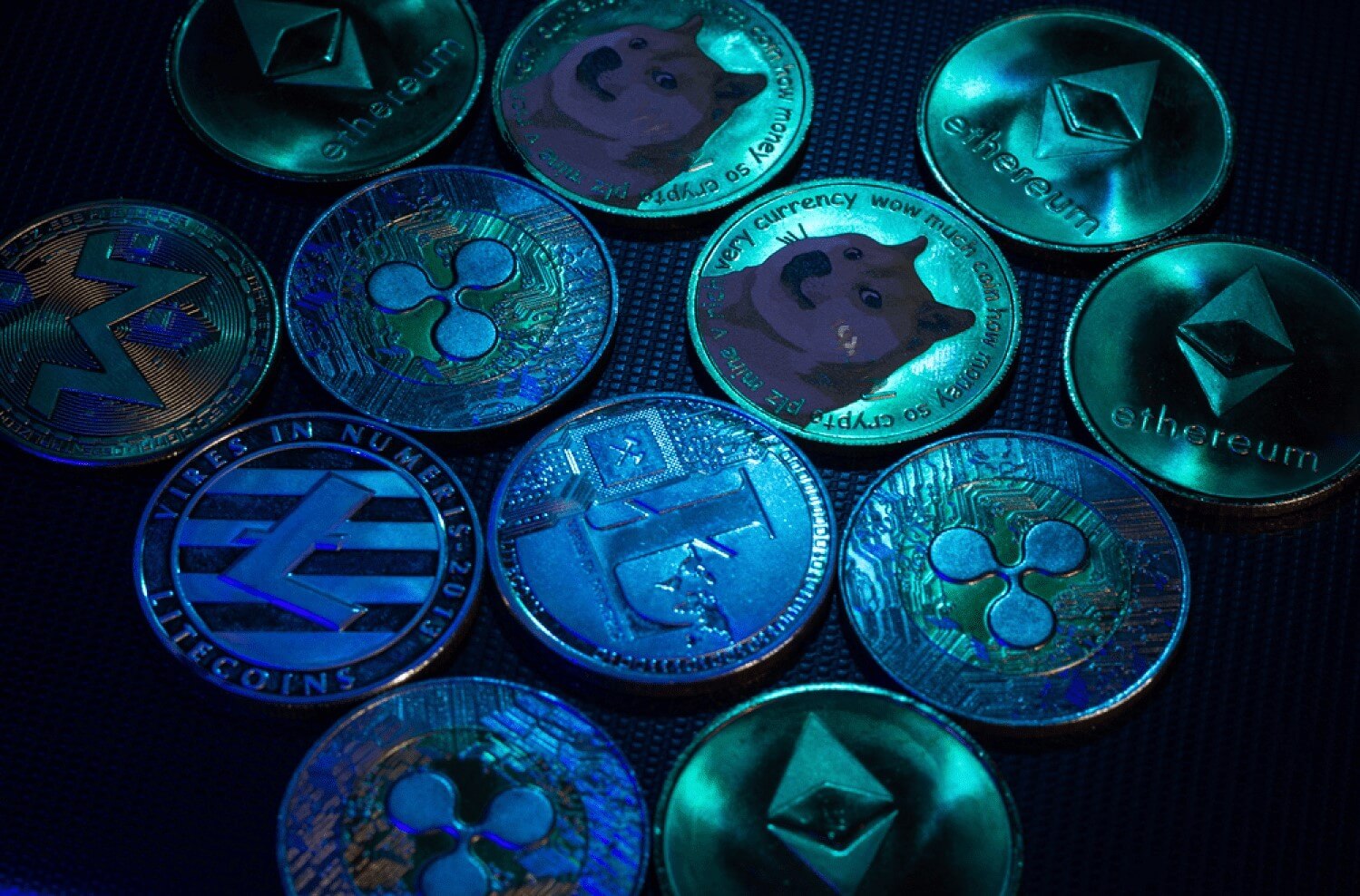As a word, Altcoin combines the words 'alternative' and 'coin' and describes any cryptocurrency or token other than Bitcoin (BTC). Therefore, it is only possible to explain an introduction to altcoins by also talking about what they are an alternative to. Bitcoin was the first functioning cryptocurrency, and the thousands that have followed since have all, in some way, tried to do something different. Therefore, referring to them as alternatives, altcoins makes sense.
What are Altcoins? And Why They Exist?
As well as being different, the goal of creating an altcoin is to provide an improvement or solve a problem with existing blockchains or cryptocurrencies. In 2011, one of the first altcoins, Litecoin, aimed to do this by forking the Bitcoin blockchain. Forking is the process of splitting off from a blockchain and creating a new chain that is incompatible with the original. In this case, the aim was to achieve faster, more cost-effective transactions than Bitcoin. If you compare sending BTC and LTC from your PlasBit wallet, you will see this difference in speed first-hand. Every Altcoin created since has unique goals and proposed reason for existing. Some, like ETH, have become so popular that many question whether the token should even be grouped under the 'altcoin.'
The Difference Between Altcoins and Bitcoin
- Functionality - Altcoins provide many unique features that improve Bitcoin's capabilities. An example is the deployment of smart contracts. These computer programs function only when specific criteria are satisfied, utilizing blockchain technology to implement agreements between two parties.
- Coin supply - The supply of Bitcoin is limited to 21 million coins, the maximum that can ever exist. However, altcoins can have a much larger or limitless supply. For example, the maximum supply of Ripple's XRP is 100 billion coins, while Dogecoin (DOGE) has an unlimited supply. The concept of coin supply is vital to understand when exploring crypto basics.
- Consensus mechanism - While Bitcoin uses a mechanism called Proof-of-Work (PoW) to process and construct blocks on the blockchain, many altcoins use a different system that provides additional features and innovations. As we have seen, some, like Litecoin (LTC), are forks or variations of Bitcoin's Proof-of-Work mechanism. Many others use a completely different system, such as Proof-of-Stake (PoS), introduced by the Ethereum blockchain. This consensus mechanism uses validators who must hold an amount of, or stake, the blockchain's token or cryptocurrency. This type of system is significantly less energy-intensive when processing transactions, so it appeals to those concerned about the environmental impact of Proof-of-Work.
Types of Altcoins
- Stablecoins - These altcoins link their value to real-world assets, such as fiat currencies, commodities, and securities. Their goal is low price volatility and, therefore, 'stable' for those using them for transactions. Two of the most popular are Tether (USDT) and USDCoin (USDC). You can see this stability in action if, for example, you hold USDC in your PlasBit wallet and witness how the price stays closely pegged to $1.
- Security tokens - This type of Altcoin allows for the tokenization of an asset - the transfer of its value into token form. This has wide-ranging applications across the world of finance and industry, for example, in the processing and registering real estate transactions. As these tokens act as securities, in the United States, they are regulated by the Securities and Exchange Commission (SEC).
- Utility tokens - These altcoins have a specific purpose and provide services on the network they exist. As well as being a cryptocurrency you can spend from your PlasBit wallet, Ether (ETH) is an example of a utility token since it is used to pay for transactions on the Ethereum blockchain and is the foundation of its functionality.
- Governance tokens - These are technically a subset of utility tokens and have the function of providing holders with certain rights and privileges on a blockchain network. Going beyond crypto basics, these include voting for protocol amendments or being able to give input on decentralized autonomous organization (DAO) decisions.
- Meme coins - Dogecoin (DOGE) was this type's first Altcoin based on a funny internet meme relating to a Shibu Inu dog. Many other such community-driven altcoins have emerged since, but the focus is more on fun than any natural or fundamental utility. It is often very little beyond the hype of these projects, but that is not to say that they can't be amusing or offer a fun introduction to altcoins. In this way, they can be helpful to become more familiar with using cryptocurrencies day-to-day within an online community.

Top 10 Altcoins
The best way to get confident with crypto basics is to become familiar with the uses and goals of some of the most popular and influential projects. So let's look at the most relevant altcoins and explore their functions and purposes.
1. Ether (ETH)
At the time of writing, ETH remains the second-largest blockchain project by measuring platform activity and market share. While Bitcoin was designed to replace traditional currency via the blockchain, Ethereum sets out to use the technology differently and arguably more broadly. The idea of Ethereum is to be a world computer on which decentralized apps (dApps) can operate and smart contracts can be executed peer-to-peer. The ETH token is central to this ecosystem, which remains the most popular space for launching new crypto projects and other altcoins on the blockchain. The maximum supply of ETH is unlimited, but one goal of the project is to slow down token emissions and encourage deflationary tokenomics in the future.
2. USDC
USDC, or USD Coin , is a stablecoin pegged to the US dollar, offering a reliable digital representation of fiat currency. It is a widely adopted cryptocurrency built on the Ethereum blockchain. USDC plays a crucial role in facilitating efficient and transparent cross-border transactions, serving as a bridge between traditional finance and the rapidly evolving world of digital assets.
3. Binance Coin (BNB)
BNB launched in 2017 as an ERC-20 token on the Ethereum network but later migrated to its own Binance Chain. BNB is used to pay fees on Binance's cryptocurrency exchange, so it is a valid utility token in the company's ecosystem. There is a maximum supply of 200 million BNB coins.
4. Ripple (XRP)
XRP is the native token used on the payment network created by Ripple, which uses distributed ledger technology (DLT) to facilitate cross-border payments and transactions. Ripple aims to effectively provide a faster, improved version of the SWIFT system currently used in traditional banking. XRP offers this robust use case for transferring money quicker and more securely. Another usage of XRP is as a bridge currency for when an exchange is not possible, and its combination of low fees and fast transaction speeds make it popular in this regard.
5. Cardano (ADA)
Created by Ethereum co-founder Charles Hoskinson, ADA is the native token of the Cardano blockchain. It has used Proof-of-Stake as its consensus mechanism since the start. Its increased speed and lower energy use brought a lot of popularity, especially when Ethereum, like Bitcoin, was still reliant on Proof-of-Work. ADA attracts many developers to work on the project, focusing on issues such as scalability, and is seen by many as a serious competitor to ETH.
6. Polygon (MATIC)
MATIC is an ERC-20 token built upon the Ethereum blockchain, which provides a so-called 'Layer 2' solution to historical scalability and flexibility issues on its parent network. The MATIC token is used for governance, security, and to pay network transaction fees on the Polygon platform. Layer 2 solutions like Polygon and its use of the MATIC token have become increasingly popular as blockchain adoption increases. Effectively it meets the demands for improved features, performance, and flexibility while retaining the core benefits and interoperability of the Ethereum blockchain.
7. Litecoin (LTC)
When launched in 2011, a goal of Litecoin's LTC token was to act like a 'silver to Bitcoin's gold.' The concept was to use LTC to make faster, smaller transactions on the blockchain. For example, with a vision of full cryptocurrency adoption, you might use your PlasBit wallet to buy a house with Bitcoin but buy your coffee with LTC. As you have already learned, it achieved faster transaction speeds by forking and modifying Bitcoin's consensus mechanism to use a different algorithm called Scrypt. Despite being surpassed by several altcoin projects regarding technical capabilities, LTC remains a resilient blockchain still active in usage and development. In addition, Litecoin (LTC) is straightforward to use and a great introduction to altcoins when exploring the crypto basics.
8. Polkadot (DOT)
DOT is the native cryptocurrency the Polkadot platform uses, an open-source project focused on interoperability. Its unique design utilizes two blockchains - the Relay Chain (main network) and Parachains (user-created networks). The goal is faster and more secure communication between private and public blockchains. In addition, it allows data to be transferred across blockchains and supports them within a single network. As a result, Polkadot (DOT) is undoubtedl y at the forefront of solving scalability and interoperability challenges.
9. Solana (SOL)
The Solana blockchain platform and its SOL token have risen rapidly in popularity, attracting top developers to use it for building dApps. SOL combines deficient transaction fees with lightning-fast transactions that use a unique 'proof-of-history' verification process. This system puts a time stamp on each block and builds an immutable record of all transactions and the order in which they are made. Increasingly, Solana (SOL) is being used for Non-Fungible Token (NFT) projects and is actively growing its partnerships across the industry and beyond.
10. Dogecoin (DOGE)
DOGE will always be known as the first meme coin, but it is essential to crypto and blockchain history. It has captured the imagination and playful spirit of many members of its community and even a confident Elon Musk. In the future, some meme coins like DOGE may find a utility or application beyond just amusement. The token may have started as a joke, but the technology it represents is a serious, growing part of our everyday lives. Using your PlasBit card and crypto wallet is a great way to familiarize yourself with an introduction to altcoins, including LTC, ADA, ETH, and other ERC-20 tokens. This way, you can compare functions, transaction speeds, and costs as you explore further.







